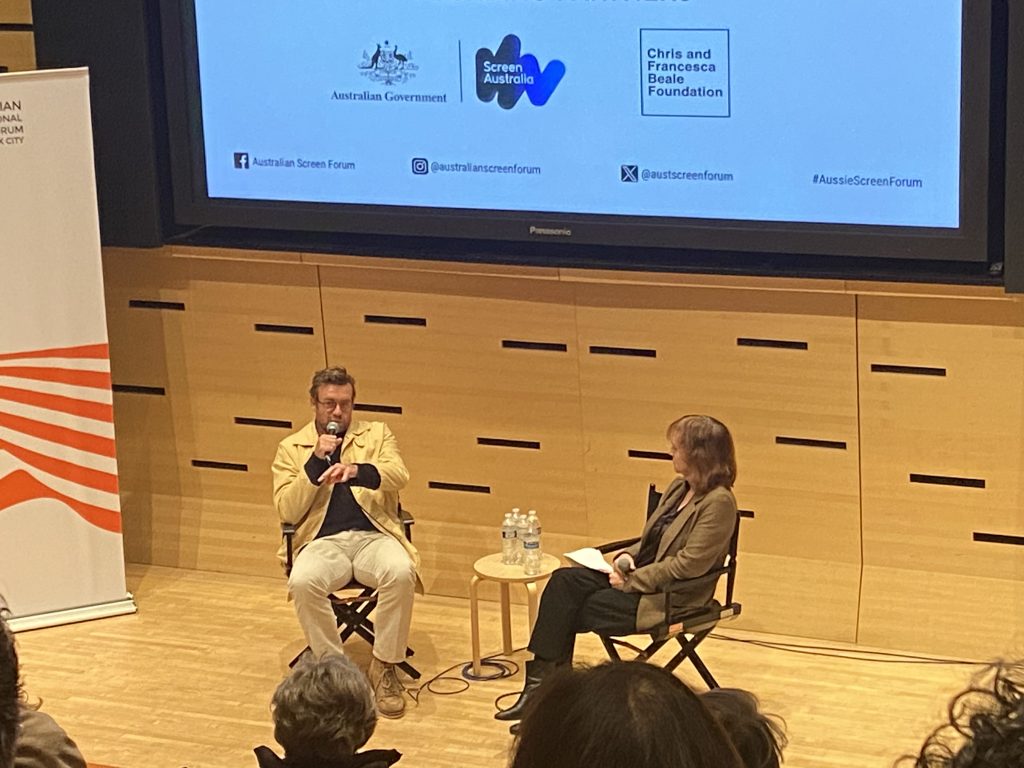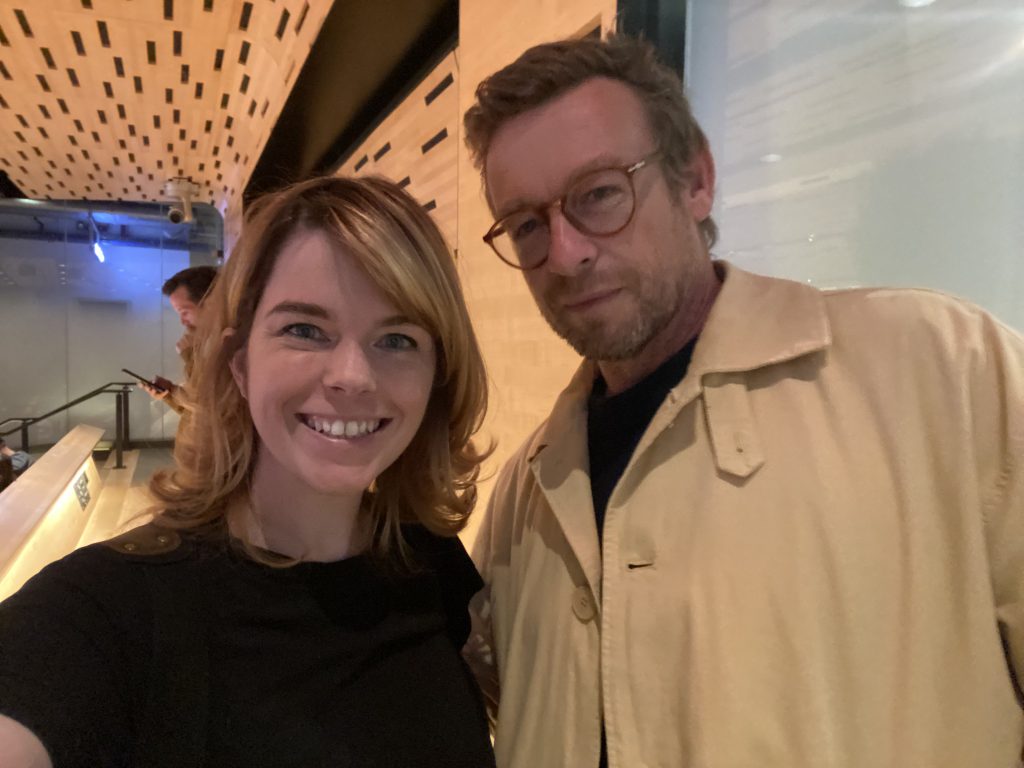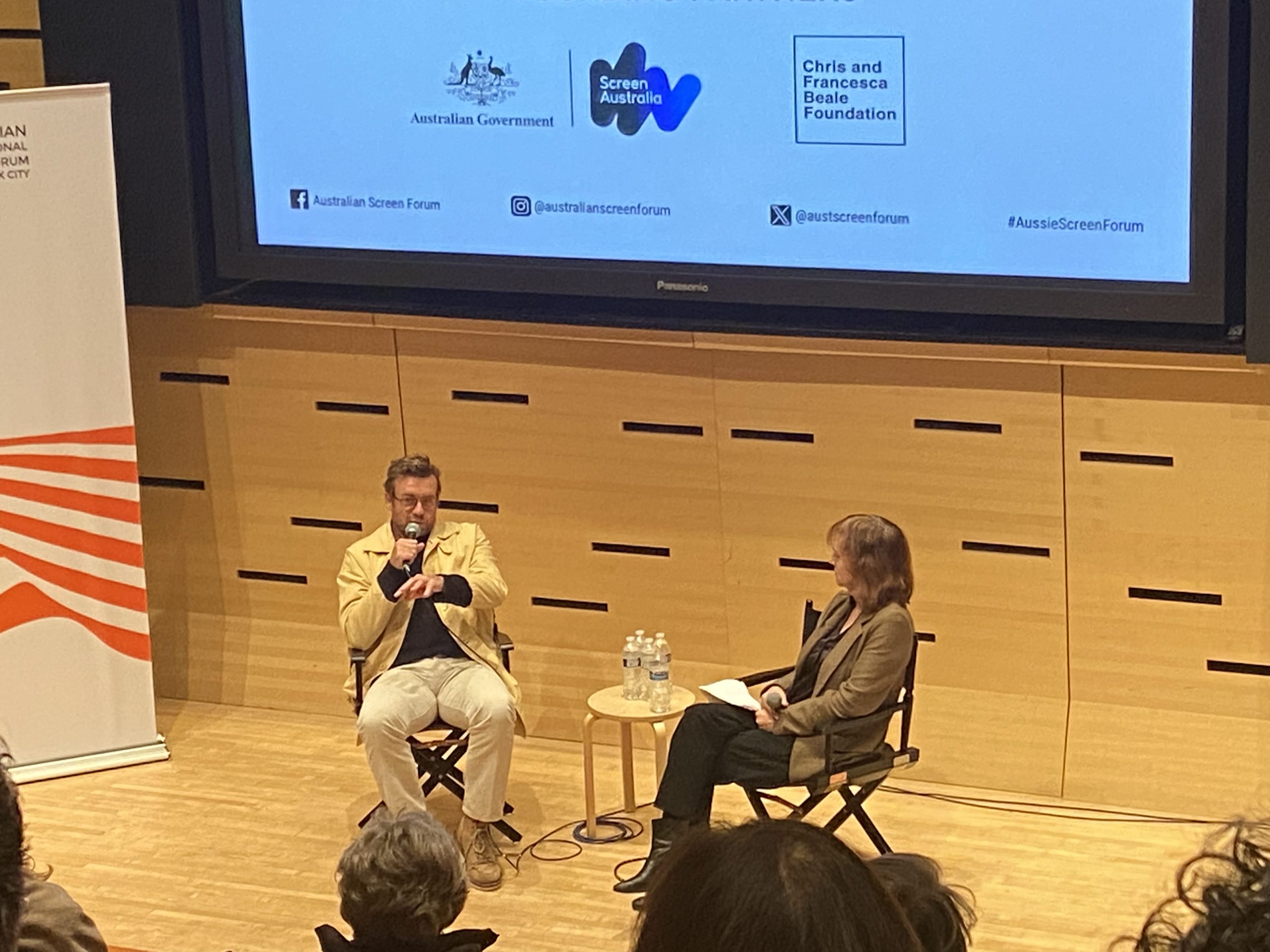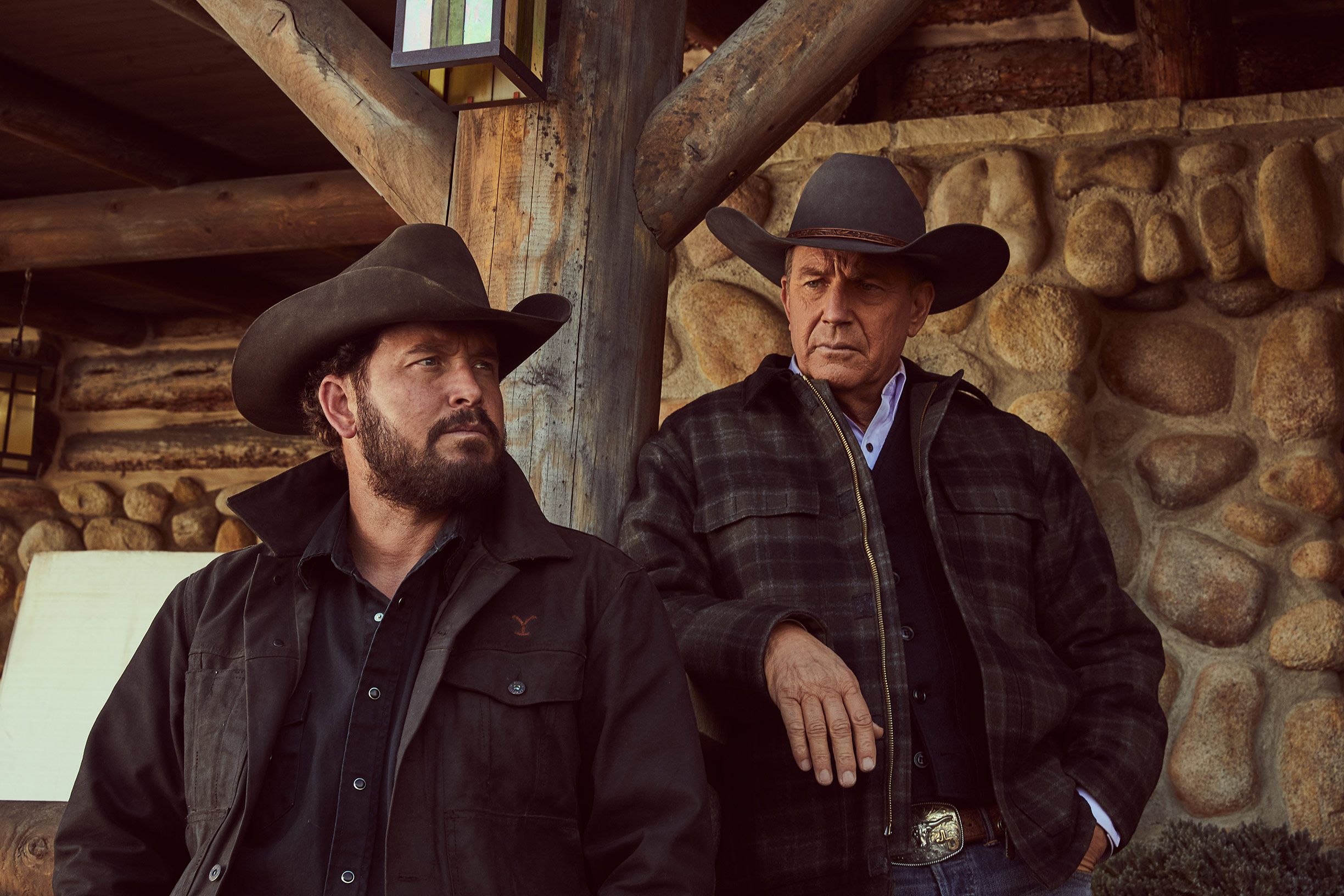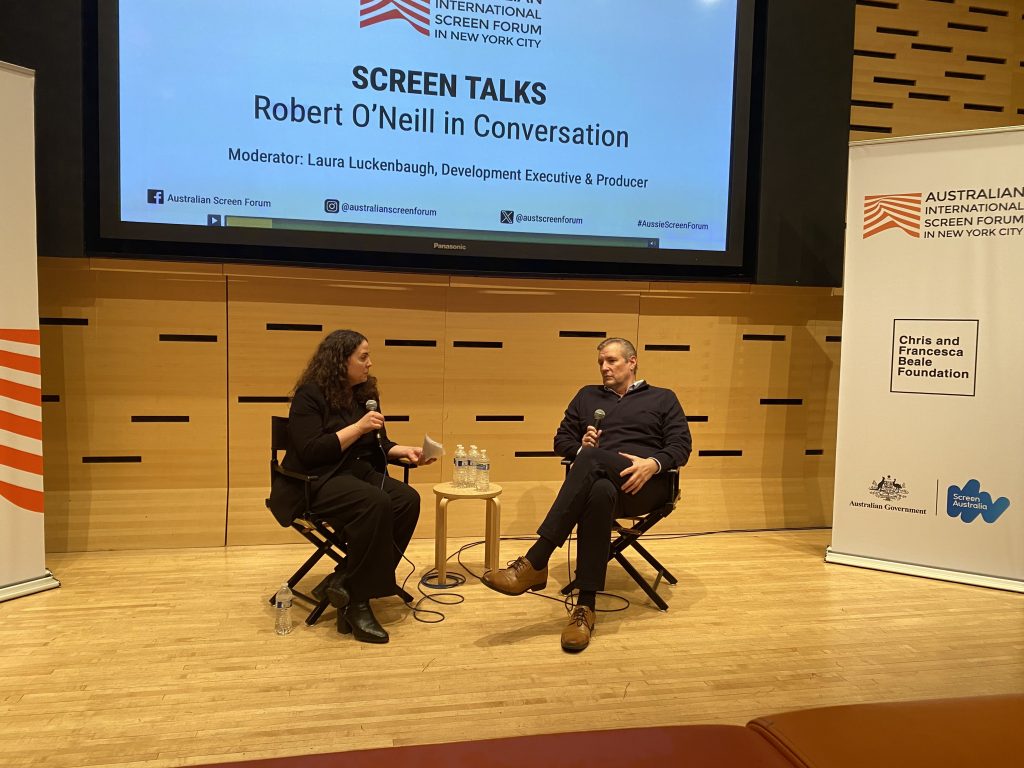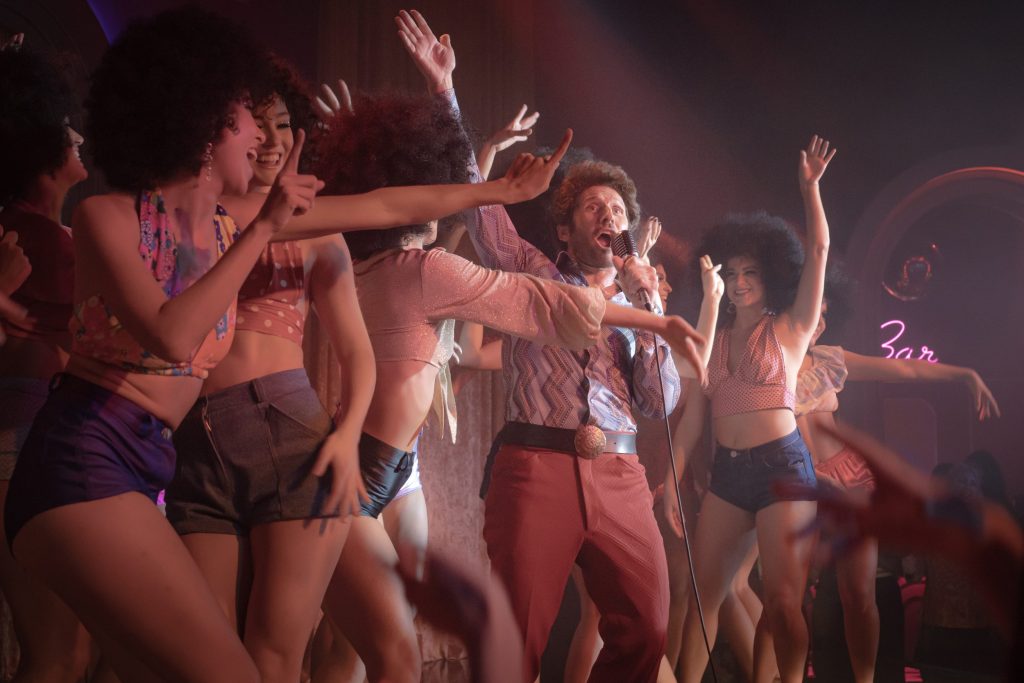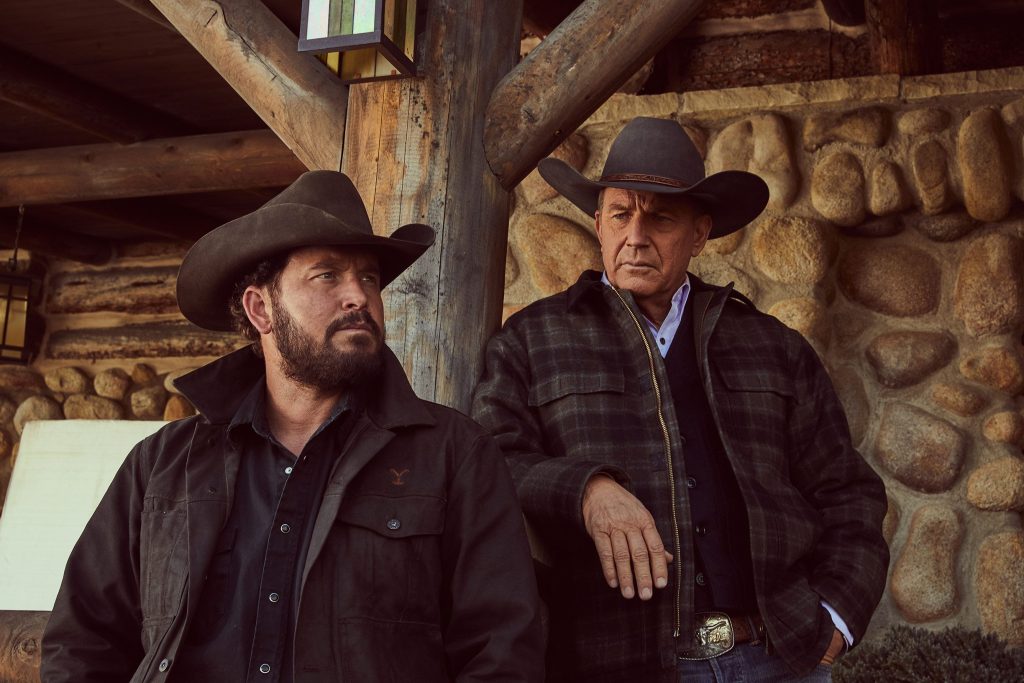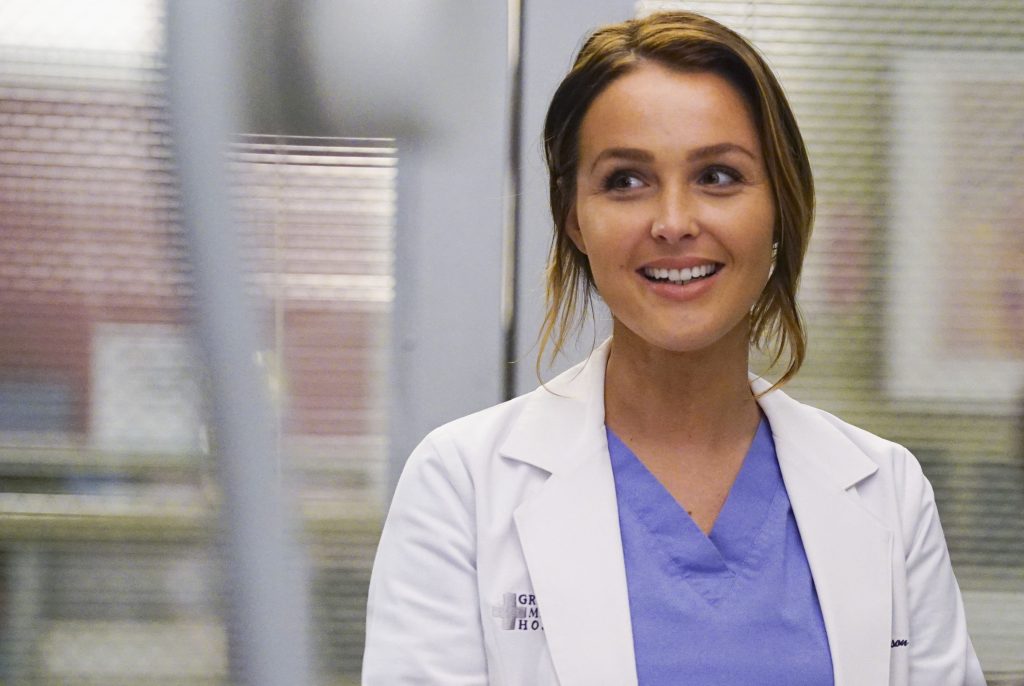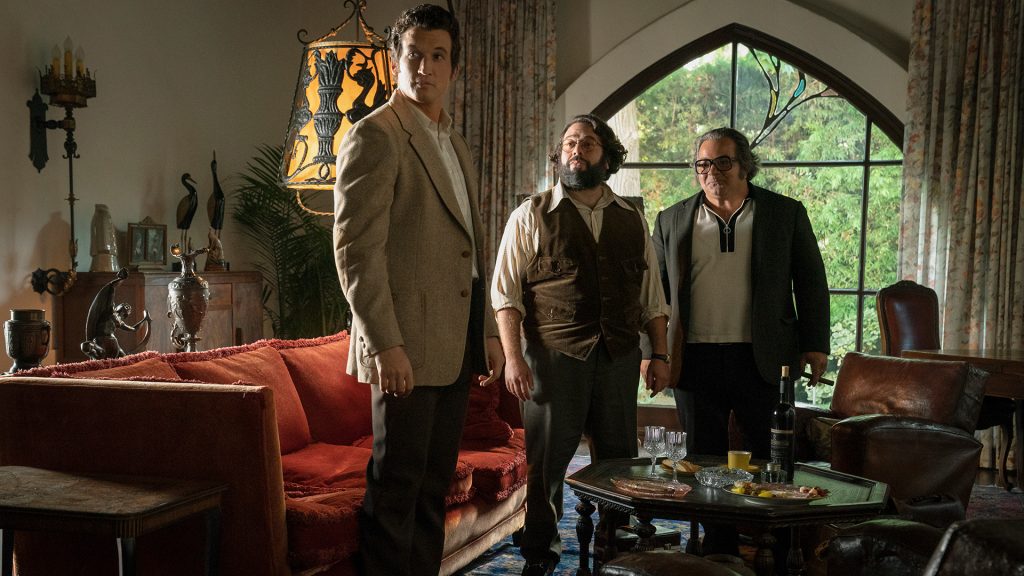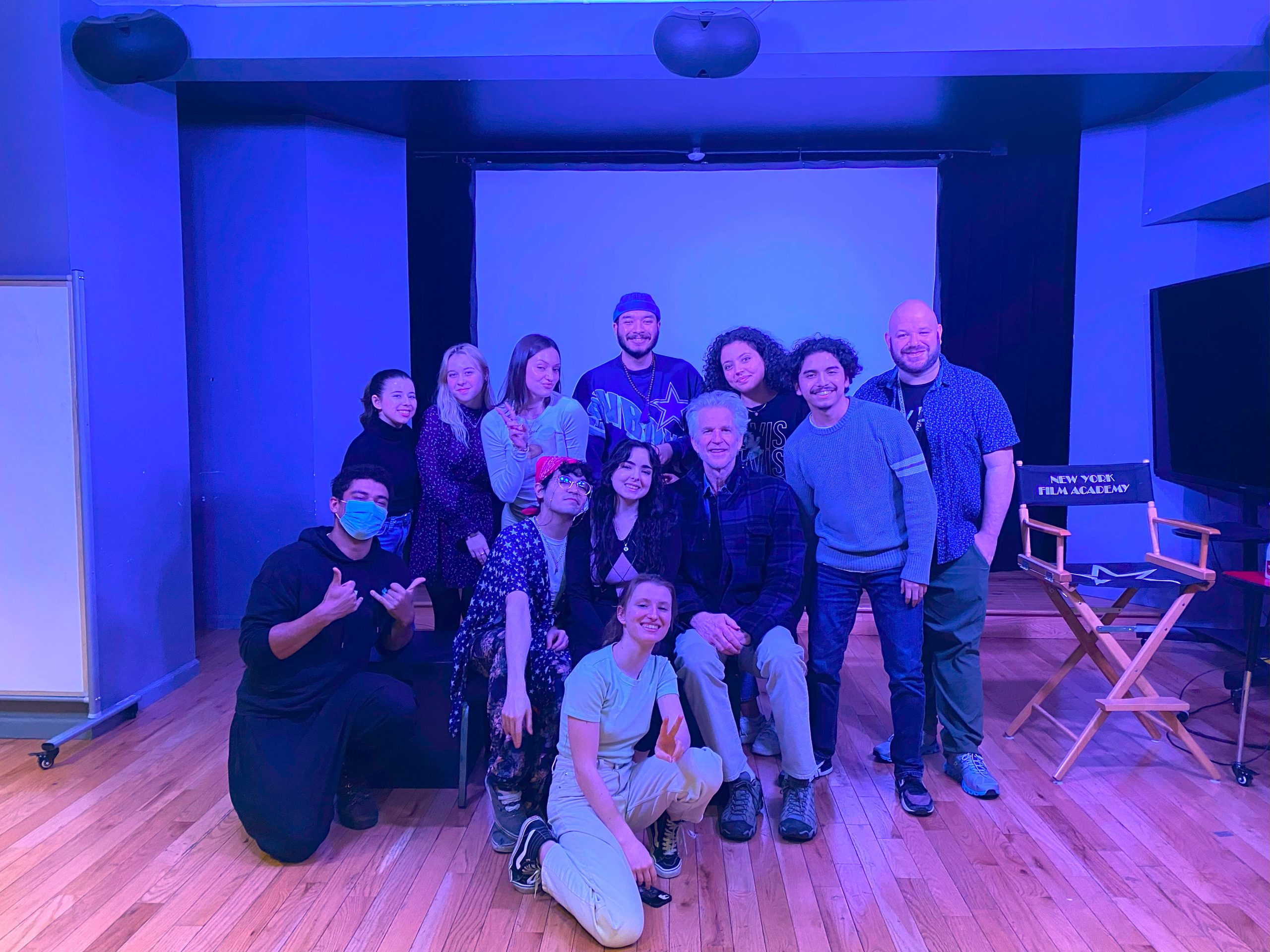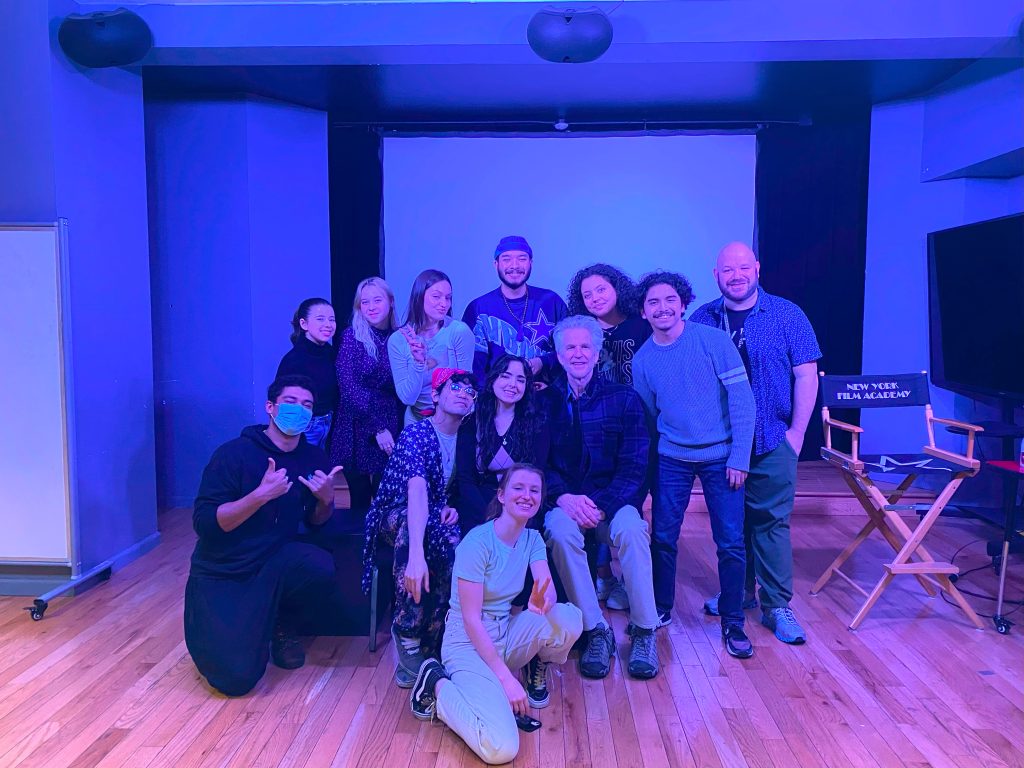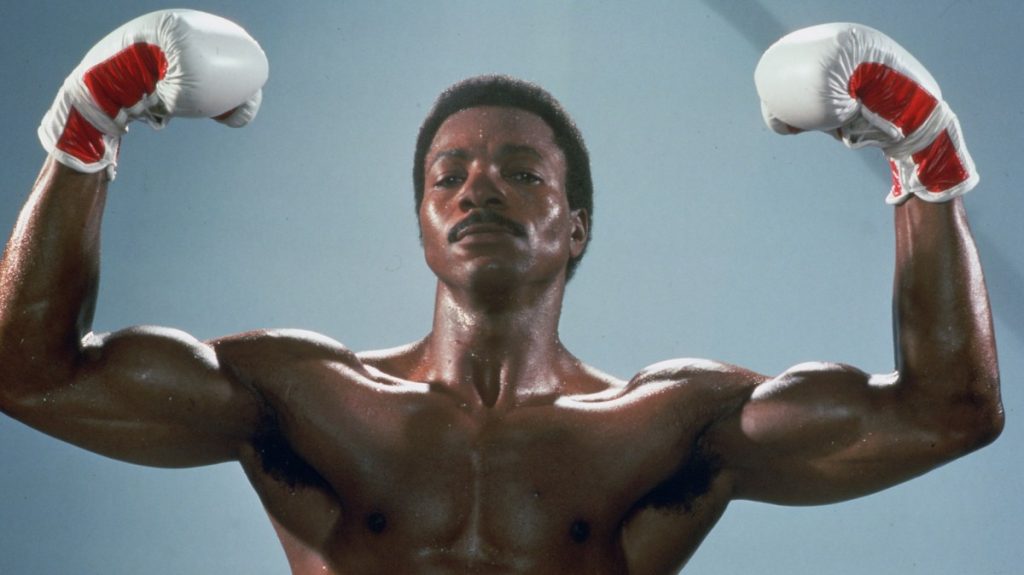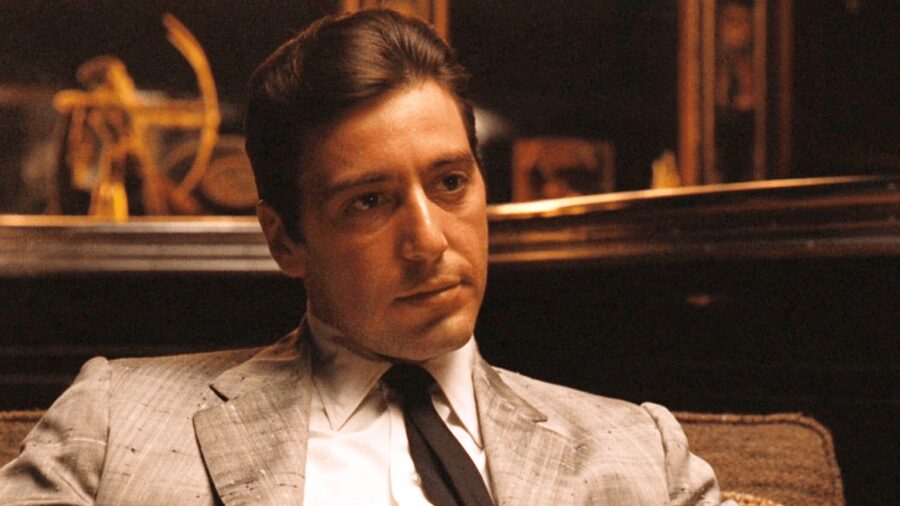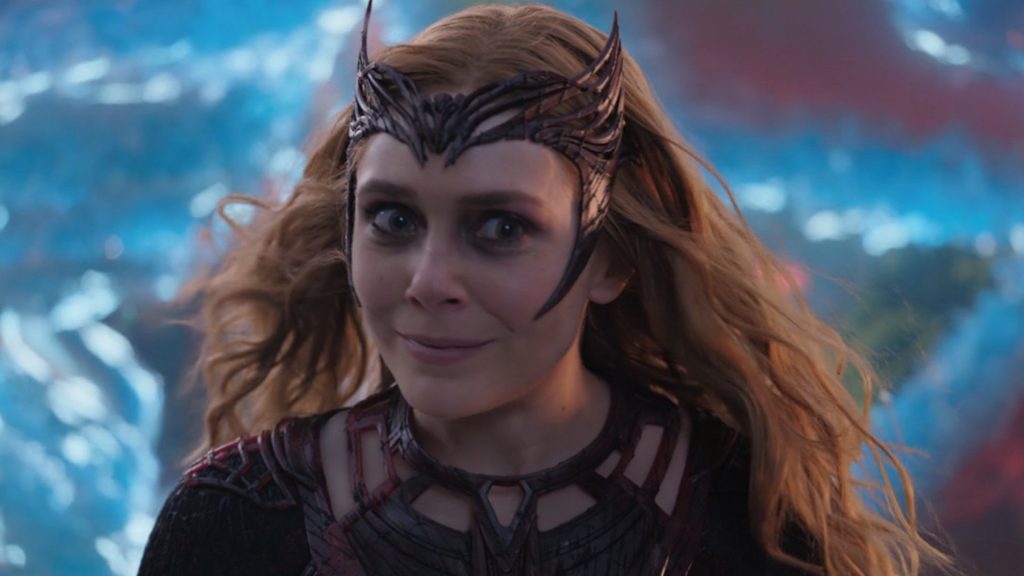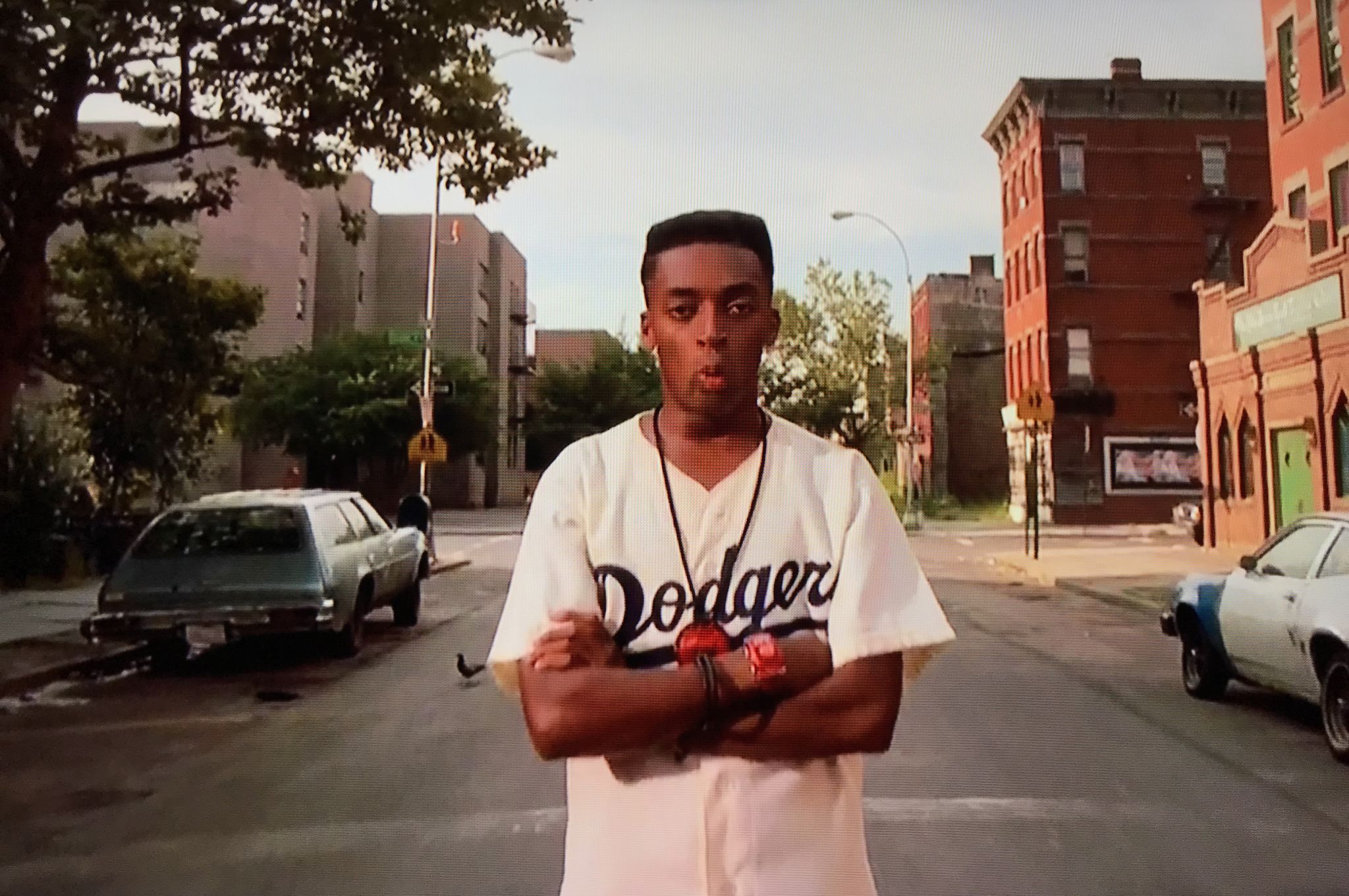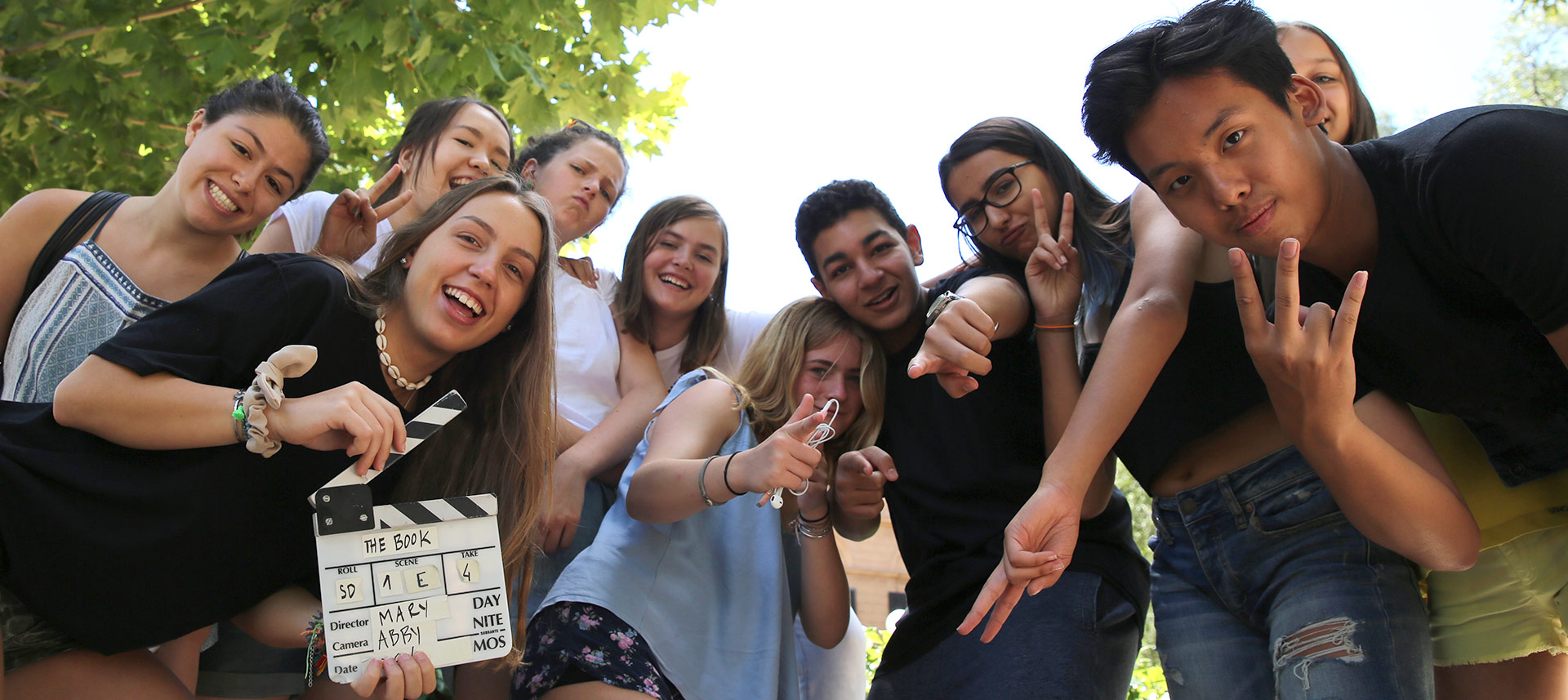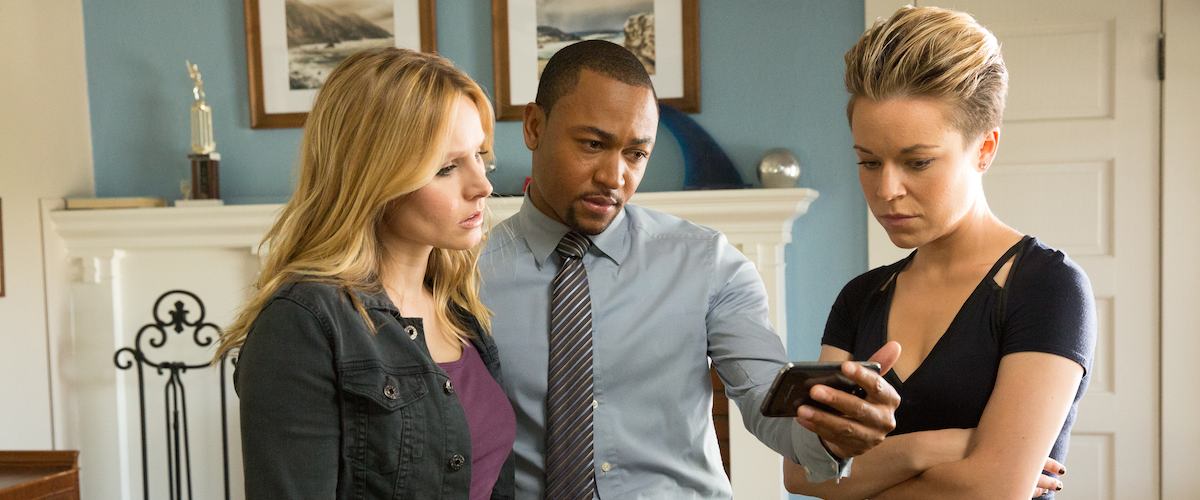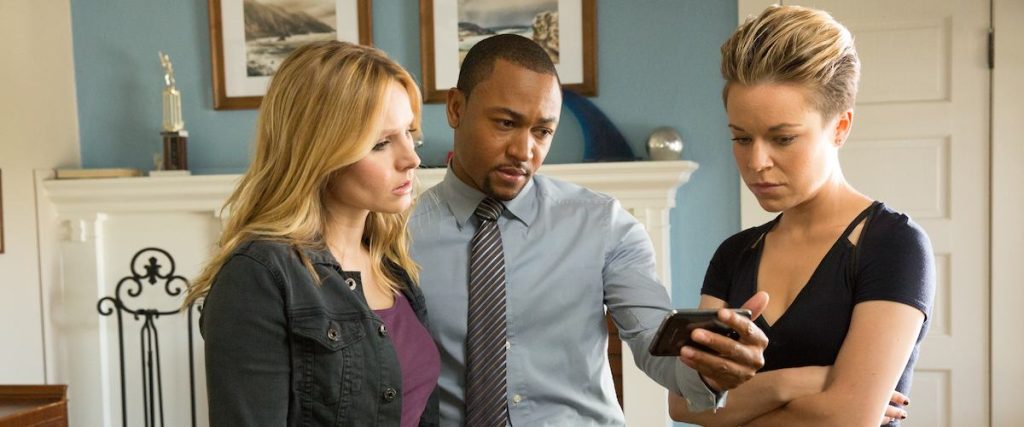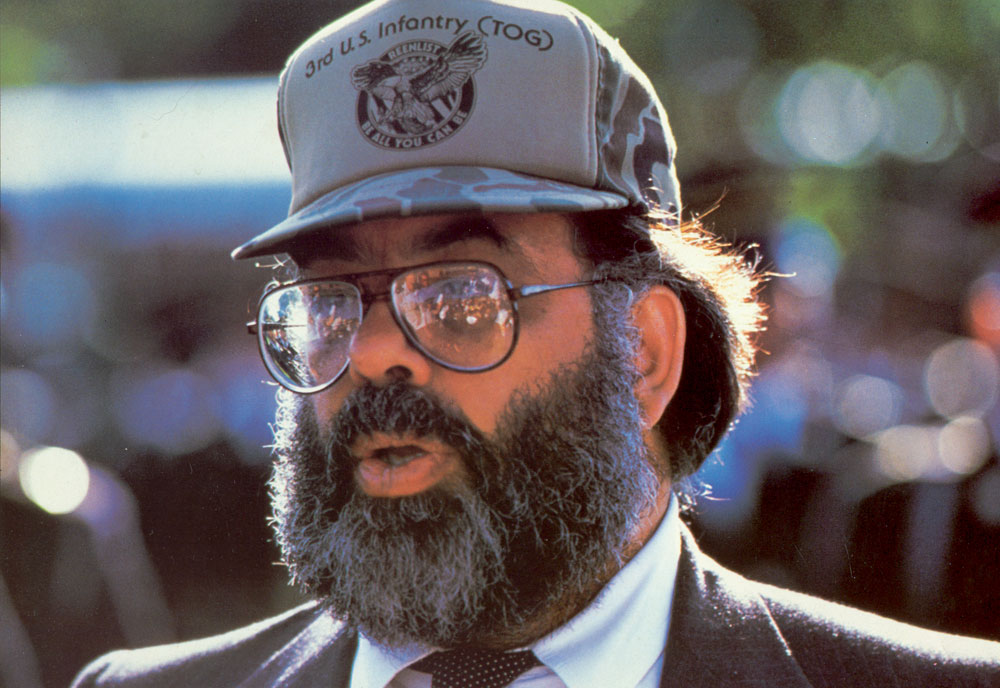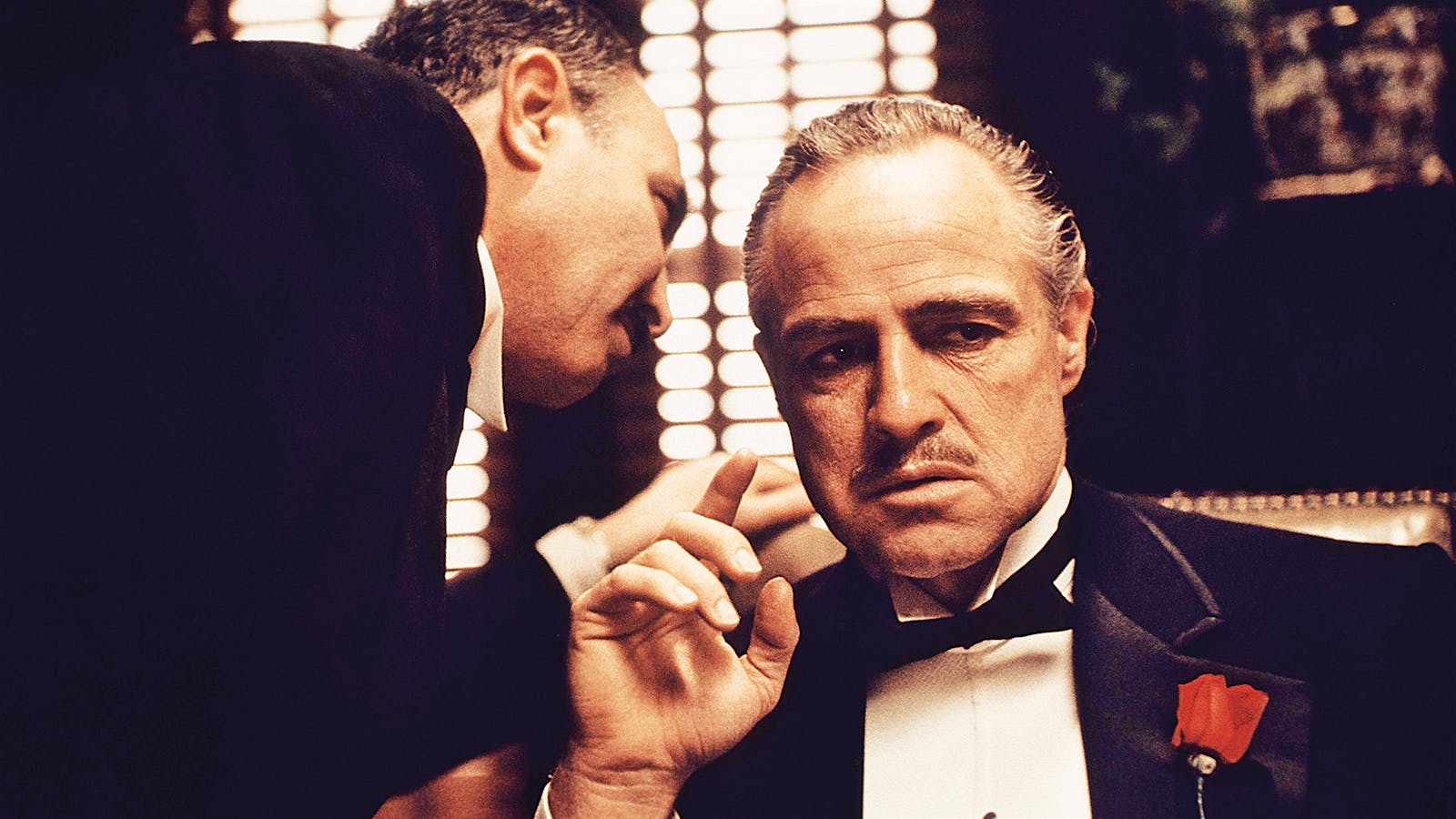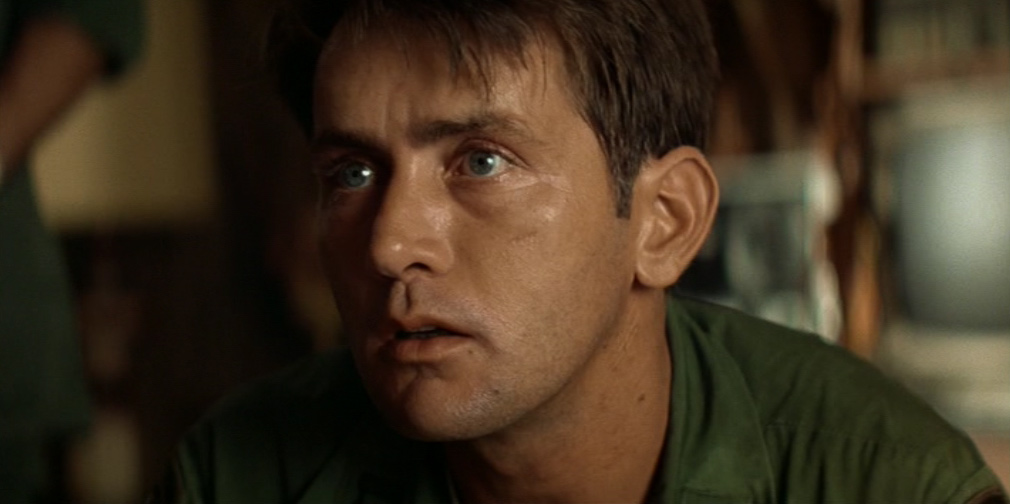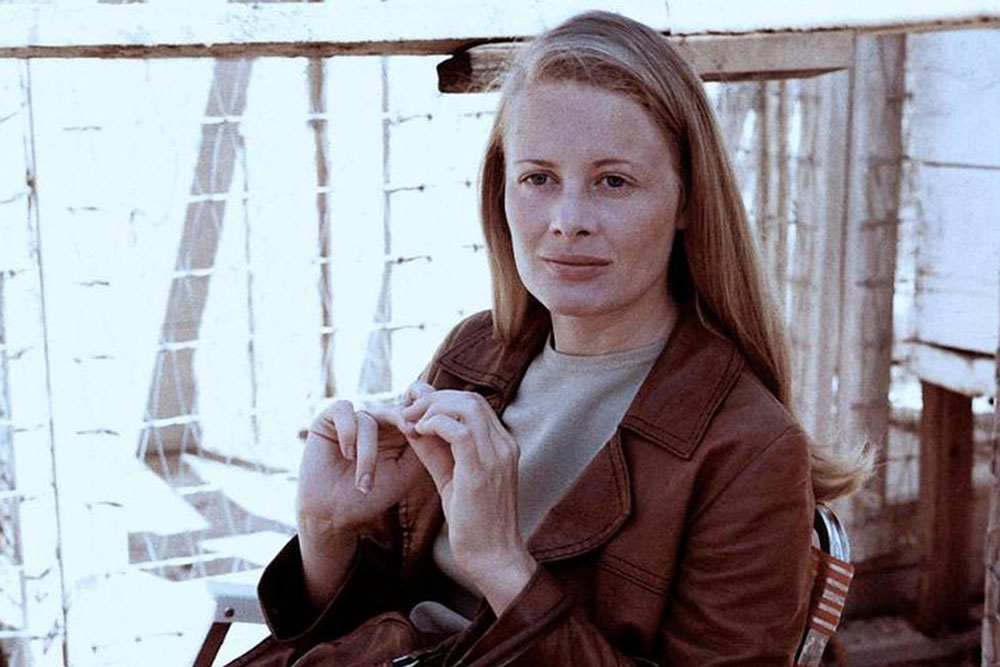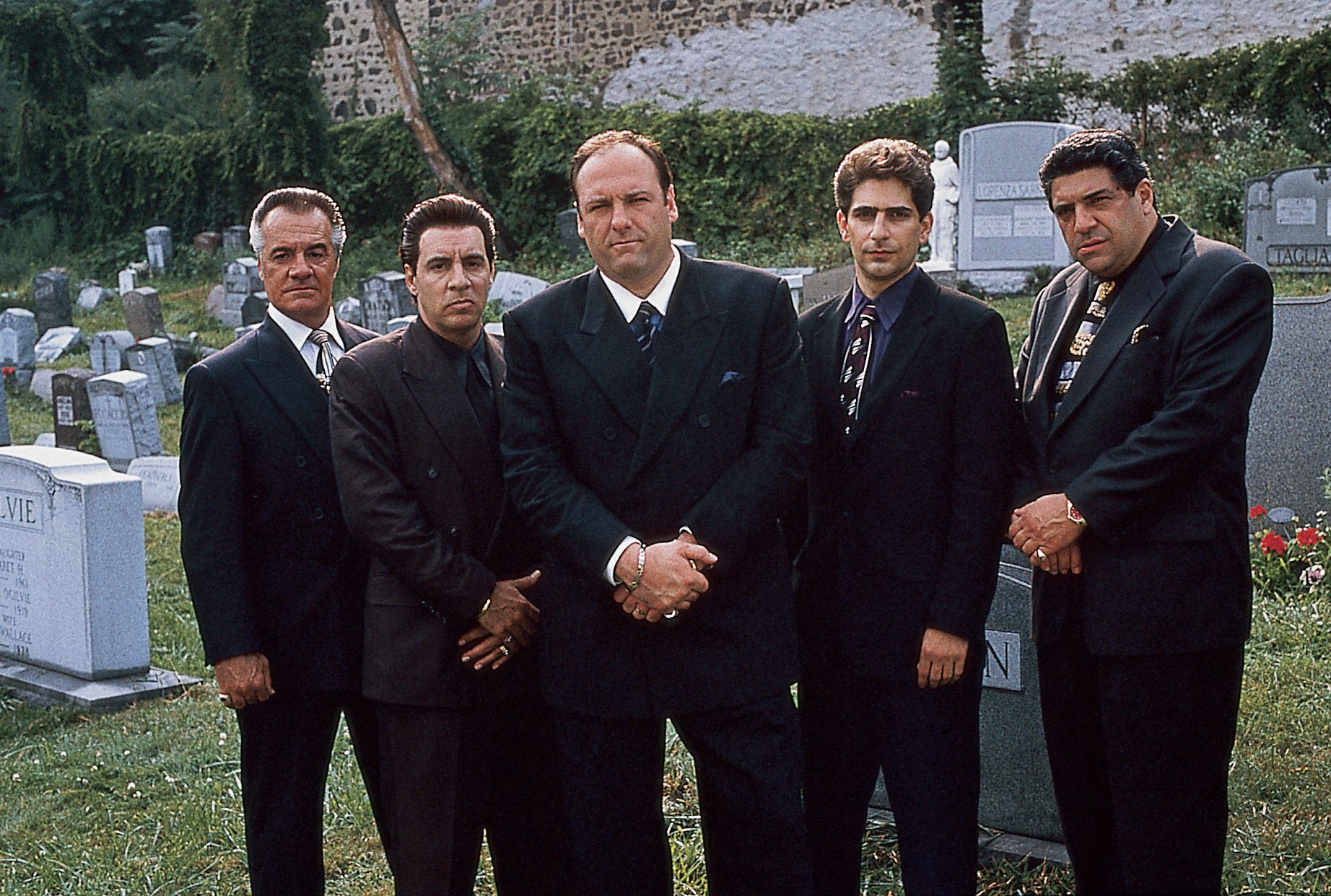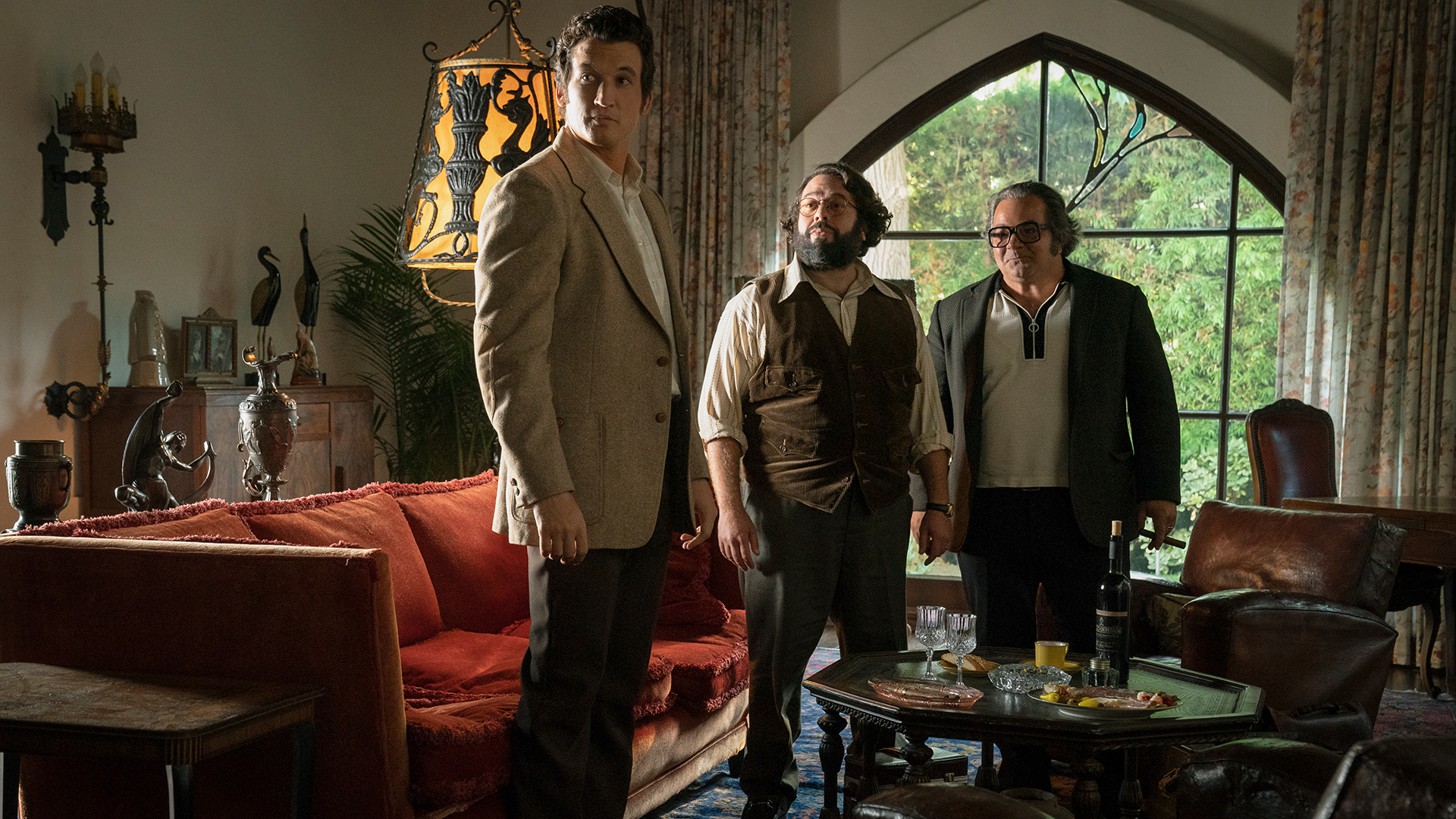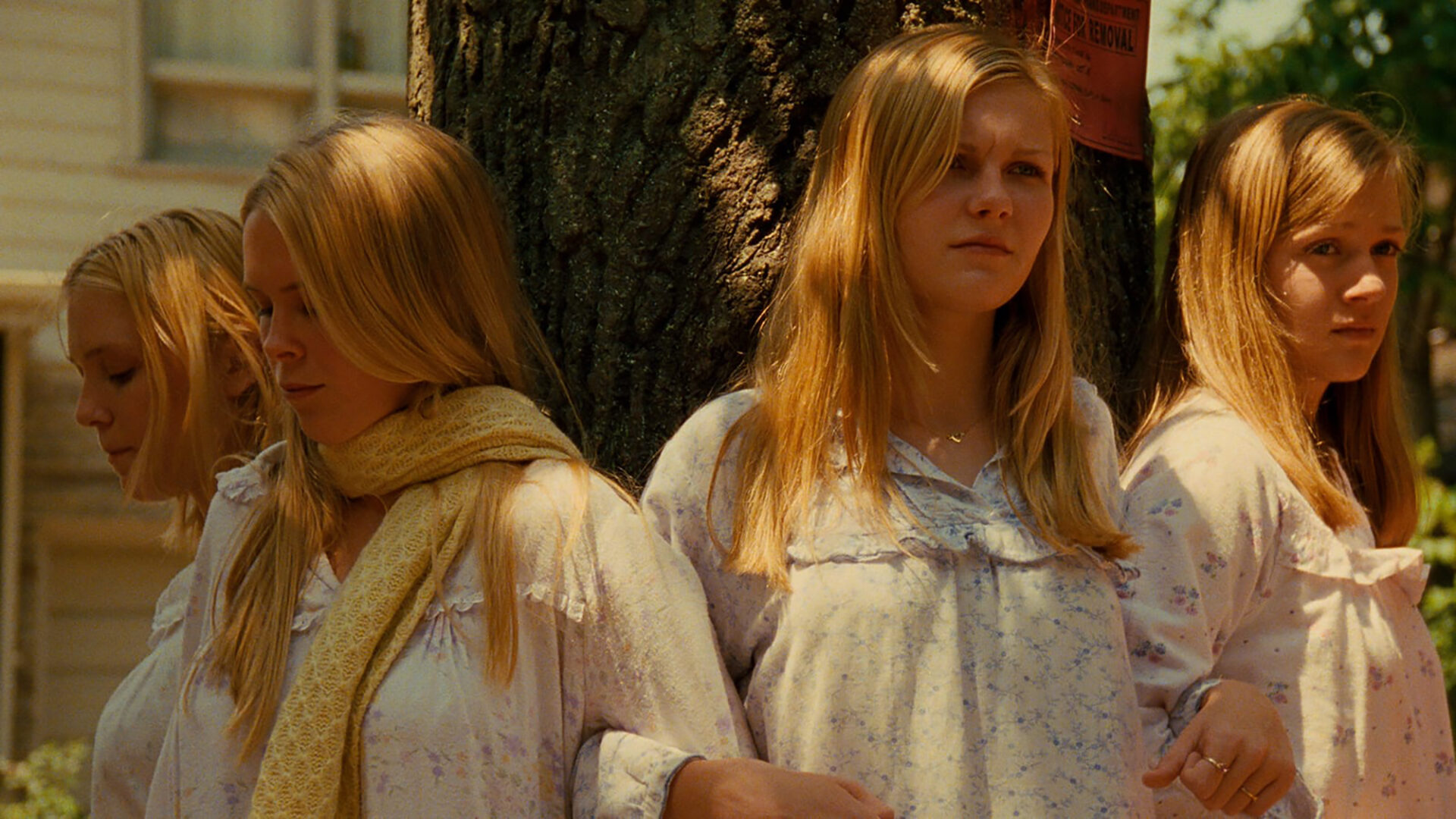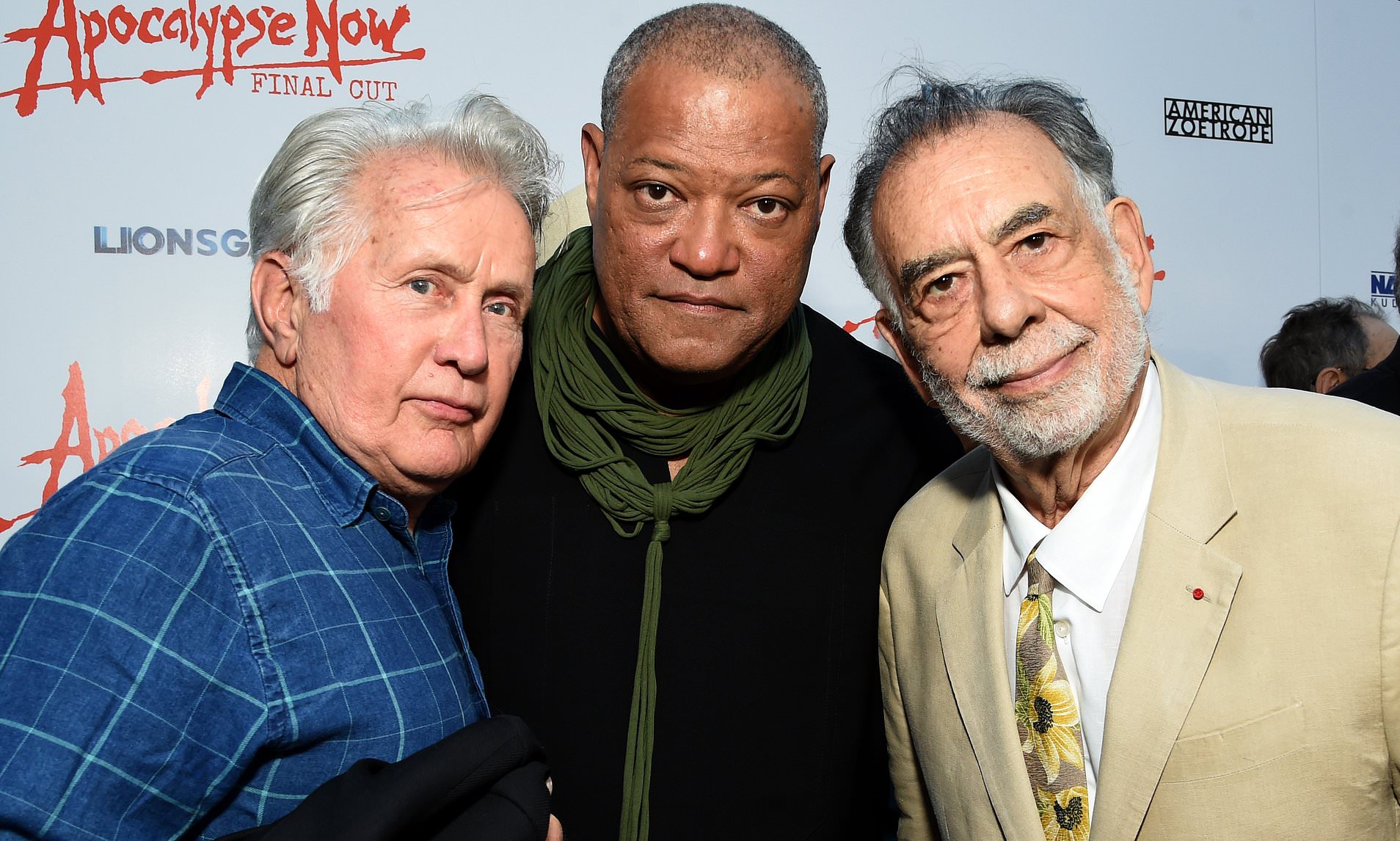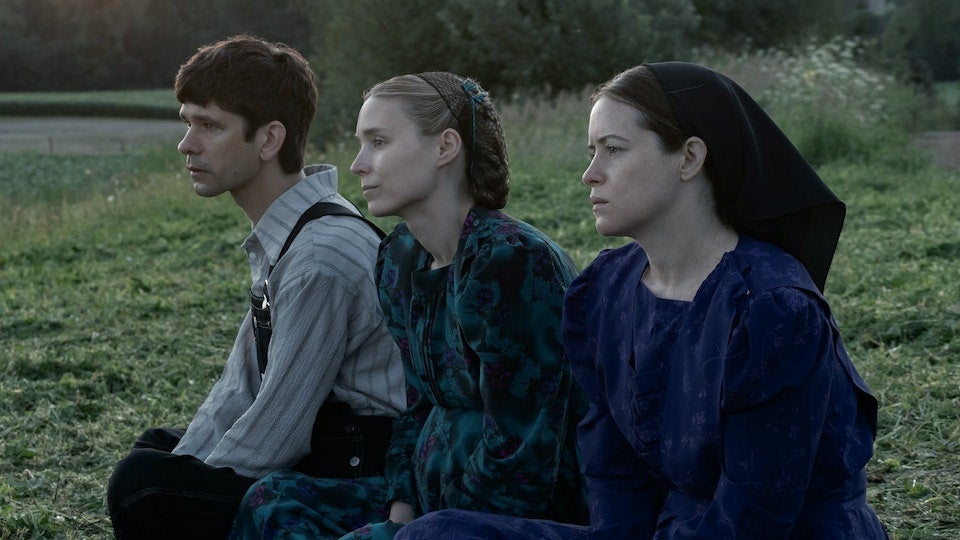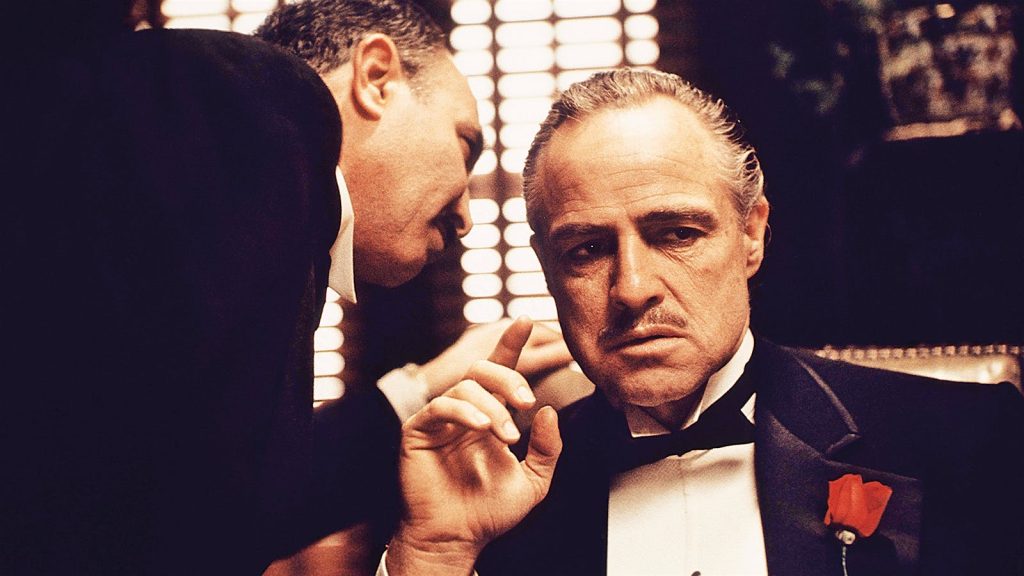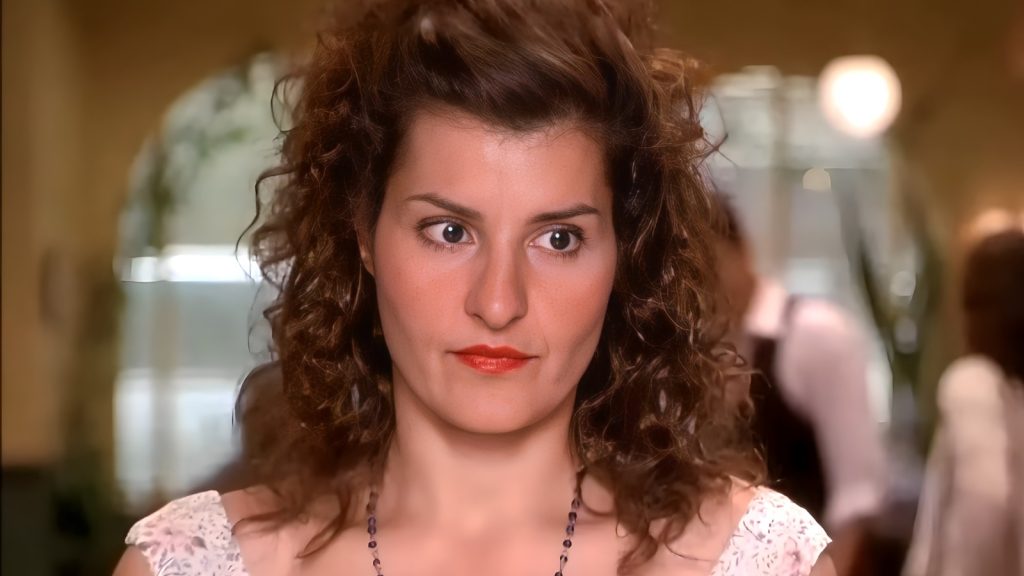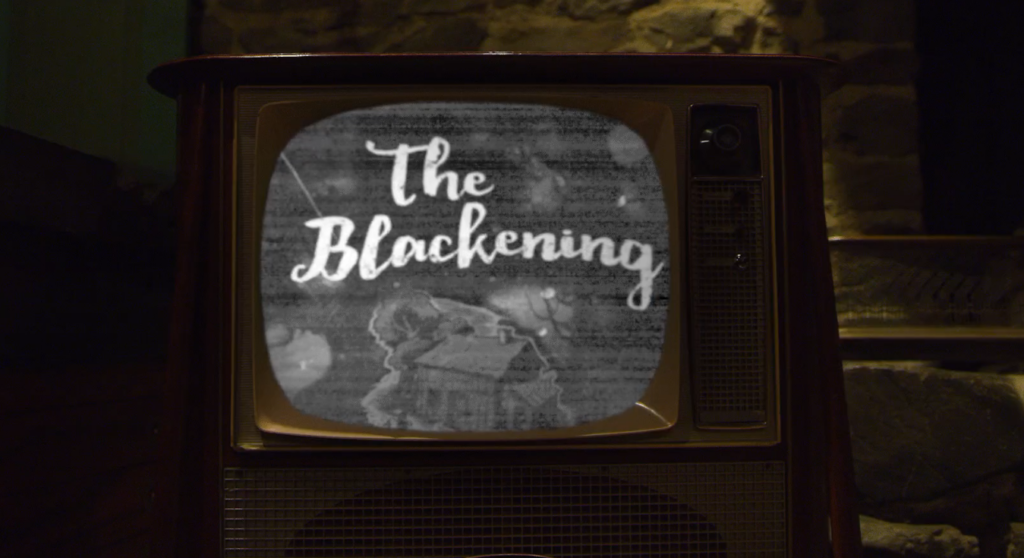For cinephiles who want to bring their own vibrant stories to life, film school is a great place to acquire specialized knowledge and skills in various aspects of filmmaking. From directing to screenwriting to cinematography to editing, at film schools like NYFA, students can collaborate with mentors and peers, build fundamental skills, and make their own original content. At NYFA, recently included in Backstage’s Top 30 Film Schools, classes are taught by film enthusiasts who actively work in their field of study, making it possible for students to learn best practices and the latest industry trends.
Films to Watch Before Going to Film School
If you’re about to begin film school, check out the films below from these stellar directors! This list has classic and modern films, in no particular order, that should be registered in any film student’s filmography database. These movies showcase directorial excellence with expert use of innovative techniques with lensing, blocking, lighting, color, composition, imagery, sound/silence, working with actors, etc. If you haven’t seen some of the films on this list, be sure to start “studying.” Just think, at least it’s not boring math.
If some of the techniques below are new to you, learn even more at the New York Film Academy!
Films to Watch Before Going to Film School
Cléo from 5 to 7 (1962)
Director: Agnes Varda
Agnès Varda was a fearless pioneer of the French New Wave, whose independent spirit and insatiable curiosity made her a revered icon in the art-house cinema world. Varda’s Cléo from 5 to 7 is a groundbreaking film that follows the life of a young singer named Cléo, who is awaiting the results of a medical test that could reveal a serious illness. The film showcases her innovative use of film techniques like real-time narrative, handheld camera, POV shots, non-linear storytelling, mirrors, and use of sound and music to create a palpable sense of intimacy and immediacy, allowing the audience to experience Cléo’s journey of self-discovery and reflection firsthand.
These techniques demonstrate Varda’s unparalleled skill and creativity as a filmmaker, cementing Cléo from 5 to 7 as a seminal work in her illustrious career and a timeless masterpiece that continues to captivate audiences today. If you enjoyed Cléo from 5 to 7, you may want to consider exploring Agnès’ impressive filmography, including The Gleaners and I (2000).
Rashomon (1950)
Director: Akira Kurosawa
By 1950, Akira Kurosawa was a filmmaker on the rise in his native Japan thanks to his auteur approach of working closely with all members of the crew, particularly the cinematographer. While the release of Rashomon (1950) was met with modest success in his homeland, it is the film credited with introducing Japanese cinema to the world stage. In the story of the investigation into a murdered samurai, the conceit of the film is that each character presents their own perspective on the same events, often contradicting other versions. So renowned is Rashomon’s narrative structure that the subsequent usage of contradictory point-of-view narratives is known as “the Rashomon effect.”
In addition to his bold narrative style, Kurosawa’s visual style is on display in Rashomon. His innovative use of screen wipes, for example, reinforces the narrative shifts from one point of view to the next. Kurosawa’s impact on all filmmaking can be seen globally but perhaps is most obvious in the influence of George Lucas and his Star Wars films.
Content Warning: Violence, mentions of sexual violence.
Children of Men (2006)
Director: Alfonso Cuarón
Alfonso Cuarón Orozco is a visionary Mexican filmmaker whose movies are renowned for his technical innovation, breathtaking visuals, and emotionally resonant storytelling. His 2006 masterpiece, Children of Men, is a dystopian thriller set in a world where humanity faces extinction due to a mysterious infertility crisis. Cuaron’s use of long takes, natural lighting, and handheld camera work creates an immersive and intense experience that puts the viewer at the heart of the action, while the film’s bleak and haunting landscapes reflect the desolate state of society.
In addition, Cuaron’s masterful use of sound design and score adds to the film’s atmosphere of tension and despair. Children of Men is a powerful testament to Cuaron’s exceptional talent and ability to push cinema’s boundaries, making it a must-see film. There are many other amazing works by Alfonso Cuarón that you can explore, such as Y Tu Mamá También (2001).
Content Warning: Y Tu Mamá También has strong sexual content involving teens, drug use, and language.
Moonlight (2016)
Director: Barry Jenkins
A groundbreaking coming-of-age drama from A24 that tackles the intersection of race, class, sexuality, and masculinity, Moonlight (2016) examines three periods of a young Black man’s life. Director Barry Jenkins collaborated with playwright Tarell Alvin McCraney to adapt McCraney’s semi-autobiographical play In Moonlight Black Boys Look Blue.
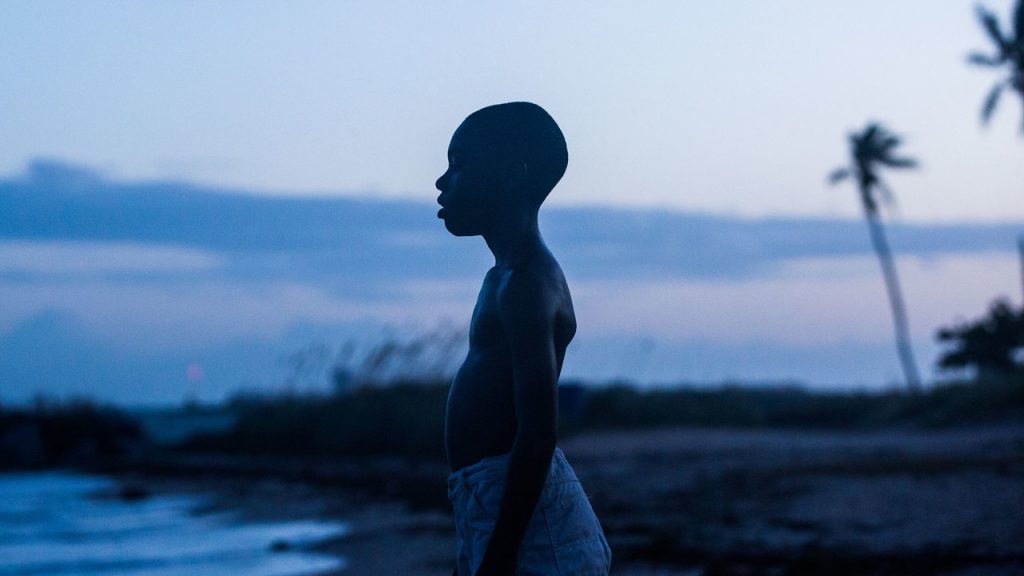
With gorgeous use of color and cinematography, the film was nominated for eight Oscars and won best-supporting actor for Mahershala Ali, who became the first Muslim to win an acting Oscar, best-adapted screenplay for Jenkins and McCraney, and Best Picture. Image via Vox.
Content Warning: Some sexuality, drug use, brief violence, and language throughout.
Portrait of a Lady on Fire (2019)
Director: Celine Sciamma
In this period piece set in the late 18th Century, French filmmaker Céline Sciamma explores the female gaze and lesbian desire through the story of a young woman, Marianne, who is brought to Brittany to paint a portrait of Heloise, who is about to be married to an aristocrat. Heloise doesn’t want to pose as she doesn’t want to be married. Marianne pretends to befriend her, secretly painting at night. Through daily walks along the wild coast, Marianne and Heloise form a friendship. When Marianne finishes the portrait, she feels guilty and reveals to Heloise her true purpose, then destroys the painting. Heloise’s mother, who commissioned the painting, is about to send Marianne away when Heloise says that she will pose. Heloise’s mother leaves for the mainland for five days, giving that as a deadline for Marianne’s new completed painting.
During this time, Marianne and Heloise’s friendship takes a turn becoming a romantic, then physical connection. Art features a prominent role in the film, with the sketches and paintings created during the shoot based on the blocking for each day. Shot in a period-specific castle, lighting was approached to evoke the light of the time, using larger light sources from outside of the windows and period-specific practical light sources such as candles. With many awards and nominations, Portrait of a Lady on Fire (2019) was the winner of the Queer Palm and the Cannes Film Festival in 2019, the first woman director to win the award. Tomboy (2011) is another film by Celine Sciamma that is a must-watch.
Content Warning: Mentions of suicide (Portrait of a Lady on Fire), mild domestic abuse (Tomboy).
Atlantics (2019)
Director: Mati Diop
Mati Diop’s debut feature Atlantics (2019), winner of the Grand Prix at the 2019 Cannes Film Festival, is a genre-fluid supernatural love story grounded in social realism. Set in Dakar, it follows 17-year-old Ada, whose lover Souleiman, a young construction worker, disappears at sea. It’s a bit like The Odyssey, as if told from Penelope’s perspective. Atlantics addresses arranged marriage, class conflict, and the migration crisis and is notable for its hypnotic, immersive audiovisual qualities.
The film was scored by electronic musician Fatima Al Qadiri, and the cinematography is by Claire Mathon, who shot Céline Sciamma’s Portrait of a Lady on Fire the same year. Newcomer Mame Bineta Sane’s performance as Ada is incredible. Director Mati Diop is also an actress who made her screen debut in Claire Denis’s 35 Shots of Rum (2008). To get a sense of this audiovisual lineage, check out some of Claire Denis’s films, shot by Agnes Godard. Mati Diop’s uncle, Djibril Diop Mambety, is one of the godfathers of African cinema — his Touki Bouki (1973) is essential.
Everything Everywhere All at Once (2022)
Directors: The Daniels
Everything Everywhere All At Once (2022) (affectionately referred to as Everything, Everywhere by fans) is the story of Evelyn, an immigrant Chinese woman (played by Michelle Yeoh) whose family business is being audited by the IRS on the same day her conservative father is arriving for a Chinese New Year celebration while her daughter is trying to get her to acknowledge her relationship with a non-Chinese woman. And so much more! As Evelyn and her husband Waymond (Ke Huy Quan) try to convince the IRS not to shut them down, Evelyn is visited by Alpha-Waymond, her husband, in the original universe from which all other of her parallel universes spin.
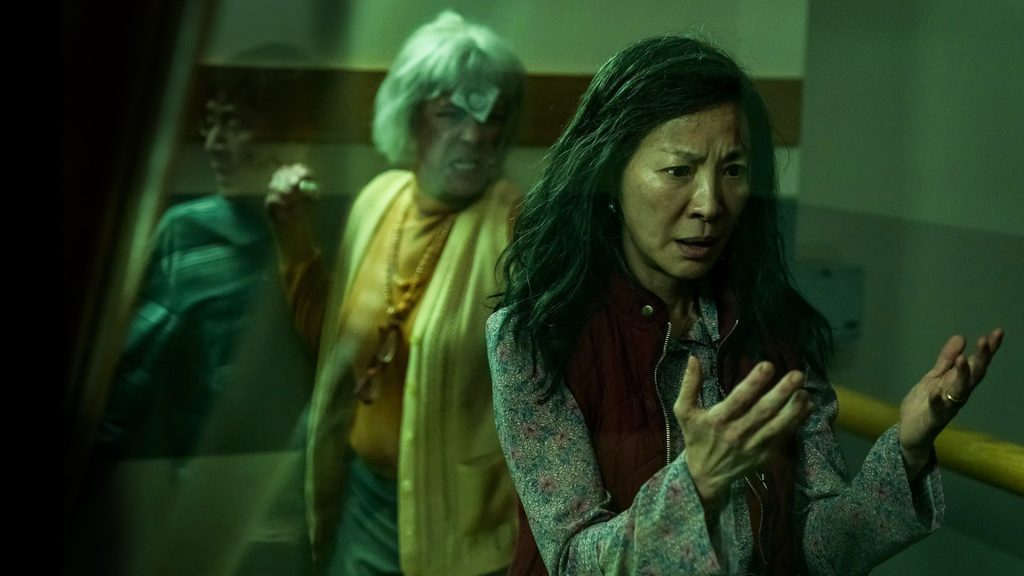
As she finds out first that the multiverse exists and second that there is a threat to all of the parallel universes through Jobu Tupaki, a nihilistic woman who looks an awful lot like Evelyn’s daughter Joy, Evelyn must “verse-jump” and try to stop Jobu from destroying them all. Incorporating multiple genres, including science fiction, surreal comedy, and martial arts films, the film is also a remarkable feat of editing. Because of the multiple universes referenced in short shots, costume, hair, and makeup had to come up with over 200 looks for Evelyn. Directed by the Daniels (Daniel Scheinert and Daniel Kwan), the film is pivotal in showcasing Asian-American talent.
The movie was nominated for and won many awards, including seven Academy Awards for Best Picture, Best Director, Best Actress (Yeoh), Best Supporting Actor (Quan), Best Supporting Actress (Jamie Lee Curtis), Best Original Screenplay and Best Editing. In their acceptance speech at the 2023 Oscars, the Daniels spoke about the film and this film in particular not as a solo venture but as being created by the genius of the community. Image via The Los Angeles Times.
The Piano (1993)
Director: Jane Campion
While the career of New Zealand filmmaker Jane Campion continues to garner awards, it was The Piano (1993) that put her in the history books for being the first female filmmaker to receive the Palme d’Or at the Cannes Film Festival. Written and directed by Campion, The Piano is the story of the struggles of a mute woman in an arranged marriage in mid-1800s New Zealand. Campion’s storytelling frequently focuses on the danger of desires, vividly filmed with a juxtaposition of beauty and brutality.
The Piano is a prime example of her style: lush New Zealand vistas counterposed with close-ups of her actors’ faces. Juxtaposed, also, are the faces of her characters – the face of Holly Hunter’s Ada is framed with still shots to represent her solitude, whereas Harvey Keitel’s George, marked with traditional Māori facial tattoos, clearly represents the wildness of Ada’s desire. The Piano also features the film debut of Anna Paquin, who would win the Academy Award for Best Supporting Actress for her role.
Content Warning: Moments of extremely graphic sexuality and sexual violence.
Taxi Driver (1976)
Director: Martin Scorsese
Martin Scorsese’s character study of a lonely taxi driver examines isolation in a gritty city. The stylistic cinematography and Scorcese’s use of close-up, overhead, and wide-angle shots isolate the main character, Travis Bickle. Scorcese breaks cinematic conventions and rules to show Bickle’s deterioration and increasing detachment from reality. Jodie Foster received an Academy Award nomination for Best Supporting Actress for her portrayal of 12-year-old prostitute, Iris.
Content Warning: Sexual violence.
Daughters of the Dust (1991)
Director: Julie Dash
With award-winning direction, performances, and cinematography, Daughters of the Dust (1991) is a classic of independent American cinema. Told through the eyes of an unborn child, the film tells the story of the conflict that ensues when an African-American family living on the Gullah Islands off the coast of South Carolina decides to move to the American mainland at the turn of the 20th Century. The family’s matriarch is reluctant to leave for fear of losing the unique remnants of West African culture they’ve been able to hold onto by virtue of existing in isolation, while the younger generation is eager to take advantage of all the opportunity and possibility for advancement that the mainland will provide.
As the family wrestles with their decision to leave, the story unfolds with a combination of naturalistic dramatic sequences, expressionist scenes driven by the unborn child’s voice, and visual tableaus displaying African & African American rituals. You should definitely check out Julie Dash’s The Rosa Parks Story (2002) and episodes of Women of the Movement (2022), Queen Sugar (2017) and Reasonable Doubt (2022).
Content Warning: Mentions of sexual assault and suicide.
The Godfather I & II (1972)
Director: Francis Coppola
When NYFA Guest Speaker Steven Spielberg, director of Jaws and Raiders of the Lost Ark, first saw Francis Ford Coppola’s The Godfather (1972), he thought to himself that he should give up trying to be a director – he was both intimidated and awed by the level of confidence and craft. The story, the characters, the performances, and the chiaroscuro lighting and cinematography kept the film high on “best movies ever” lists since it debuted more than 50 years ago. The Godfather is a storytelling masterpiece, introducing the ideas of power, family solidarity, and capitalism and exploring thematically whether those three ideas could co-exist.
Despite the success of The Godfather, Coppola lamented how the film’s audience lauded protagonist Michael Corleone as a great hero instead of a more complex and even tragic figure. In The Godfather Part II, he tells the story of the Corleone family with more clarity, complexity, and depth. The non-linear story structure he and co-writer Mario Puzo employed became an inspiration for how filmmakers would take risks moving forward – and Robert Deniro’s portrayal of young Vito Corleone would earn him his first Oscar. Coppola’s other films, The Conversation (1974), Apocalypse Now (1979), and The Outsiders (1983), are other great examples of Coppola’s work.
Content Warning: Violence, domestic violence (The Godfather I & II). Disturbing violent images (Apocalypse Now).
Citizen Kane (1941)
Director: Orson Welles
Director Orson Welles, who also produced, co-wrote, and starred in Citizen Kane, was only twenty-five when he revolutionized filmmaking in this 1941 classic. To appreciate his unique directorial look for this film, pay particular attention to its cinematography (specifically its use of deep focus and mise-en-scene), editorial techniques (like wipes for transitions), shot composition, and use of contrast, as well as its narrative structure, which were completely innovative for its time and still hold up today.
The Hurt Locker (2008)
Director: Kathryn Bigelow
Making a war film is one of the biggest challenges a filmmaker can undertake. You’re challenged to tell a story to tell a story about people as opposed to politics, and you’re also fighting against the collective imagination of how society thinks about the war at that moment. In The Hurt Locker (2008), Kathryn Bigelow manages to tell a story about loss, grief, regret, and our obsession with both the structure and thrill that going to war provides. With classic works like Point Break (1991), Strange Days (1995), and K-19 The Widowmaker (2002).

Bigelow established herself as a master of action cinema; with The Hurt Locker, she demonstrates her bonafides as a master of suspense in a profound way. The Hurt Locker, which won 6 Oscars for Best Picture, Best Director, Editing, and Original Screenplay, to name a few, is a masterpiece action movie as well as a complex meditation about why we fight. Image via Foreign Policy.
Jaws (1975)
Director: Steven Spielberg
The first modern blockbuster, Steven Spielberg’s Jaws, is arguably one of the best movies ever made. Some classify Jaws as an action drama, but perhaps the better classification is that Jaws is a horror movie. The story is about what happens when a killer shark unleashes chaos on a beach community off Cape Cod, motivating a local sheriff, a marine biologist, and an old seafarer to hunt the beast down. The film offers thrills, scares, intense conflict, and bonding among the film’s main characters, as well as the tasty irony of the protagonist’s psychology – the sheriff tasked to kill the shark is afraid to go into the water.
Made when Spielberg was only 29, the film is meticulously crafted – introducing a command of multiple genres and techniques to keep the audience engaged. Jaws is the winner of 3 Academy Awards, the most memorable being for John Williams’s haunting score. Spielberg is one of the most prolific directors in cinema history – Raiders of the Lost Ark (1980), E.T. The Extra-Terrestrial (1982), Schindler’s List (1993), and Munich merit multiple viewings.
Mississippi Masala (1991)
Director: Mira Nair
Mira Nair is a director known for her exploration of cultural identity, and her 1991 drama Mississippi Masala is a shining example of her craft. The film tells the story of a forbidden love affair between an Indian woman and an African-American man in rural Mississippi. Nair’s use of vivid colors, music, and dance captures the warmth and sensuality of the story’s setting, while her skillful direction of the film’s performances brings out the characters’ humanity and vulnerability. Additionally, Nair’s use of flashbacks and montage sequences helps convey the characters’ histories and motivations.
Her deft handling of the film’s themes of race, class, and cultural conflict creates a rich and nuanced story that resonates with audiences. Furthermore, Nair employs a variety of techniques to convey the complexity of the cultural clash at the heart of the film, including the use of contrasting images, framing, and montage to juxtapose the Indian and African-American cultures and the use of close-ups and medium shots to highlight the characters’ emotions and relationships. All of these techniques work together to create a captivating and heartfelt story that remains a classic of contemporary cinema.
2001: A Space Odyssey (1968) and The Shining (1980)
Director: Stanley Kubrick
Stanley Kubrick made only 13 features over the course of his career, and each is precision-cut like a fine jewel. His 1968 landmark 2001: A Space Odyssey — shot in 70mm, intended for Cinerama, and best experienced on a big screen — had a massive impact on generations of filmmakers and remains one of the most influential sci-fi movies of all time. If you’re interested in movies that deal with A.I., it’s essential.
If you’re interested in horror, Kubrick’s The Shining is a masterwork that rewards multiple reviewings. There are many ways to read The Shining (see the documentary Room 237), but on a deep level, it’s about the violence of American history and how history has a way of repeating itself. Some of its shots are legendary: the elevator releasing a river of blood or the uncanny, identical twin sisters who flash up to visit Danny. The Shining is also notable as one of the first films to make expert use of the Steadicam, which glides through the Overlook Hotel like a supernatural entity (operated here by inventor Garett Brown).
From its opening shots, set to the ominous “Dies Irae,” you know you’re in for a ride. After you watch it, track down the “Making of” documentary, made by Kubrick’s daughter, if you can.
Do the Right Thing (1989)
Director: Spike Lee
Spike Lee’s Do the Right Thing (1989) is a masterpiece of American cinema and a tour de force of film style. The story unfolds over a single day on a single neighborhood block — only it’s the hottest day of the year, and racial tensions and social conflicts are simmering toward the point of explosion. There are so many reasons to see this movie, especially for filmmaking students. It’s a vivid example of social realism amplified by expressive design, camerawork, and choreography. Note the cinematography by Ernest Dickerson, production design by Wynn Thomas, the costumes by Ruth E. Carter, and the music by Public Enemy, whose “Fight the Power” provides the anthem and the ensemble of incredible performances.
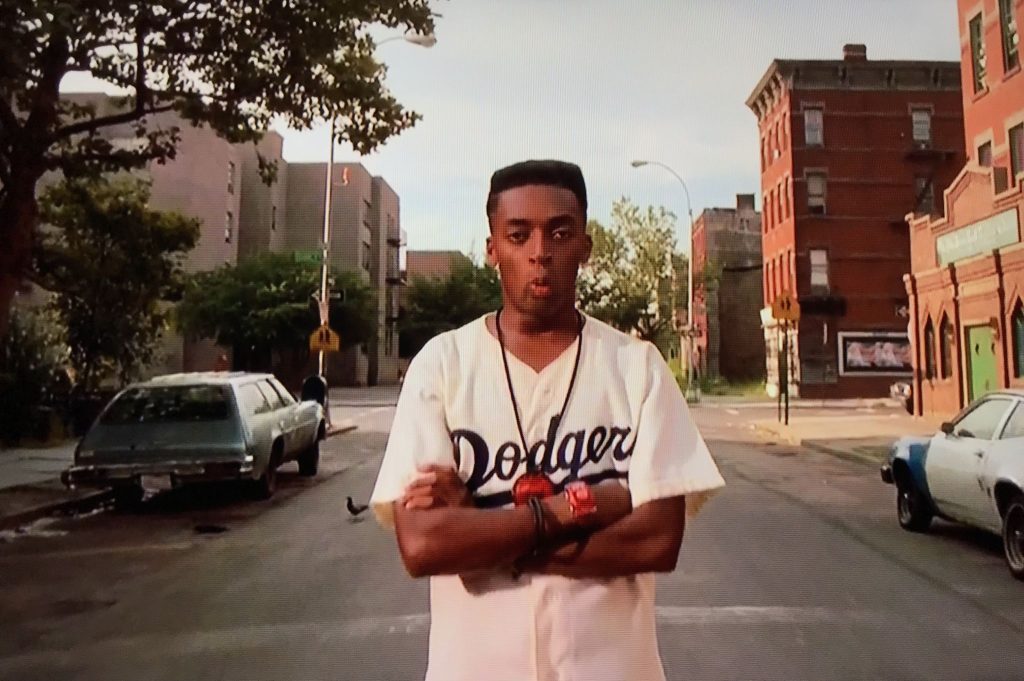
For a deeper glimpse into Spike Lee’s creative process, check out the journal he wrote while developing Do the Right Thing (excerpts included with the Criterion Blu-ray; also published as a book). Image source via Awardsdaily.
Content Warning: Police violence, racist language.
The Matrix (1999)
Directors: The Wachowskis
Although it’s hard to imagine now, but in 1999 the world was not ready for The Matrix (1999). Only the second film from the writer-director duo Wachowski siblings, The Matrix was a genre-defying mash-up of high-concept science-fiction, philosophy, Hong Kong-style action, and a hefty dash of religious metaphor the likes of which had never been seen before. The film is just as much a technical achievement as a storytelling one, perhaps best known for innovating the “bullet time” camera technique.
It also helped popularize the ‘wire-fu’ style of Hong Kong among Western audiences, as well as advancing the use of CGI and practical set design.
In the Mood for Love (2000)
Director: Wong Kar-Wai
That Wong Kar Wai’s In The Mood For Love (2000) is one of the first masterpiece films of the 21st century is no surprise – from the story to the performances, cinematography, production design, and music – the film is a major influence on the past two decades of cinema. The logline – two neighbors form a strong bond after both suspect extramarital activities of their spouses. However, they do their best to keep their bond platonic so as not to commit similar wrongs.
To say that this film is a love story would be diminutive – it’s about how love, heartbreak, grief, and mourning, but also how emotional devastation can potentially give us a unique opportunity for renewal. The cinematography is exquisite – instead of using wide shots to establish locations and dramatize isolation, Wong conducts a masterclass on how to use depth in the frame. The montages, which offer a playful mixture of detailed production design, lush costumes, and hypnotic music, are mesmerizing.
This film, along with other works from Wong Kar Wai’s oeuvre: The ChungKing Express (1994), Happy Together (1997), and 2046 (2004), is also worth multiple viewings.
Additional Film Recommendations
It doesn’t end there. Below is a continuation of recommended viewing for incoming film students.
- Amores Perros (2000): Content Warning: Animal Violence
- Birdman (2014): Content Warning: Attempted Suicide
- Wanda (1970)
- Jeanne Dielman, 23 Quai du Commerce, 1080 Bruxelles (1975)
- The Watermelon Woman (1996)
- Nomadland (2020): Content Warning: Mention of suicidal ideation
- The Rider (2017)
- Beau Travail (1999): Content Warning: Mention of suicide
- Raising Arizona (1987)
- No Country for Old Men (2007)
- La Strada (1954)
- City of God (2002): Content Warning: Sexual Violence
- Jules and Jim (1962)
- 400 Blows (1959)
- Love & Basketball (2000)
- Pan’s Labyrinth (2006)
- Milk (2008): Content Warning: Police violence
- Good Will Hunting (1997)
- Get Out (2017)
- Eve’s Bayou (1997)
- Meshes of the Afternoon (1943)
- A League of Their Own (1992)
- Pulp Fiction (1994): Content Warning: Sexual Violence
- Pather Panchali (1955): Content Warning: Animal Violence
- Once Upon a Time in the West (1968)
- The Good, the Bad, and the Ugly (1966)
- Bicycle Thieves (1948)
- Paris, Texas (1984): Content Warning: Sexual Violence
Learn More About Filmmaking at NYFA
Ready to pursue your passion for film and make your own compelling stories? Request more information about New York Film Academy’s filmmaking programs and workshops today!
